The honeycomb polypore, scientifically known as Neofavolus alveolaris, is striking with its distinctive undersurface. It’s also edible (though not exactly a prime species) and might be a useful ecological tool. This mushroom species complex grows widely across eastern North America.
- Scientific Name: Neofavolus alveolaris, Neofavolus americanus group
- Common Names: Honeycomb Polypore, Hexagonal Polypore, Hexagonal-pored polypore
- Habitat: Dead and recently fallen hardwood branches
- Edibility: Edible
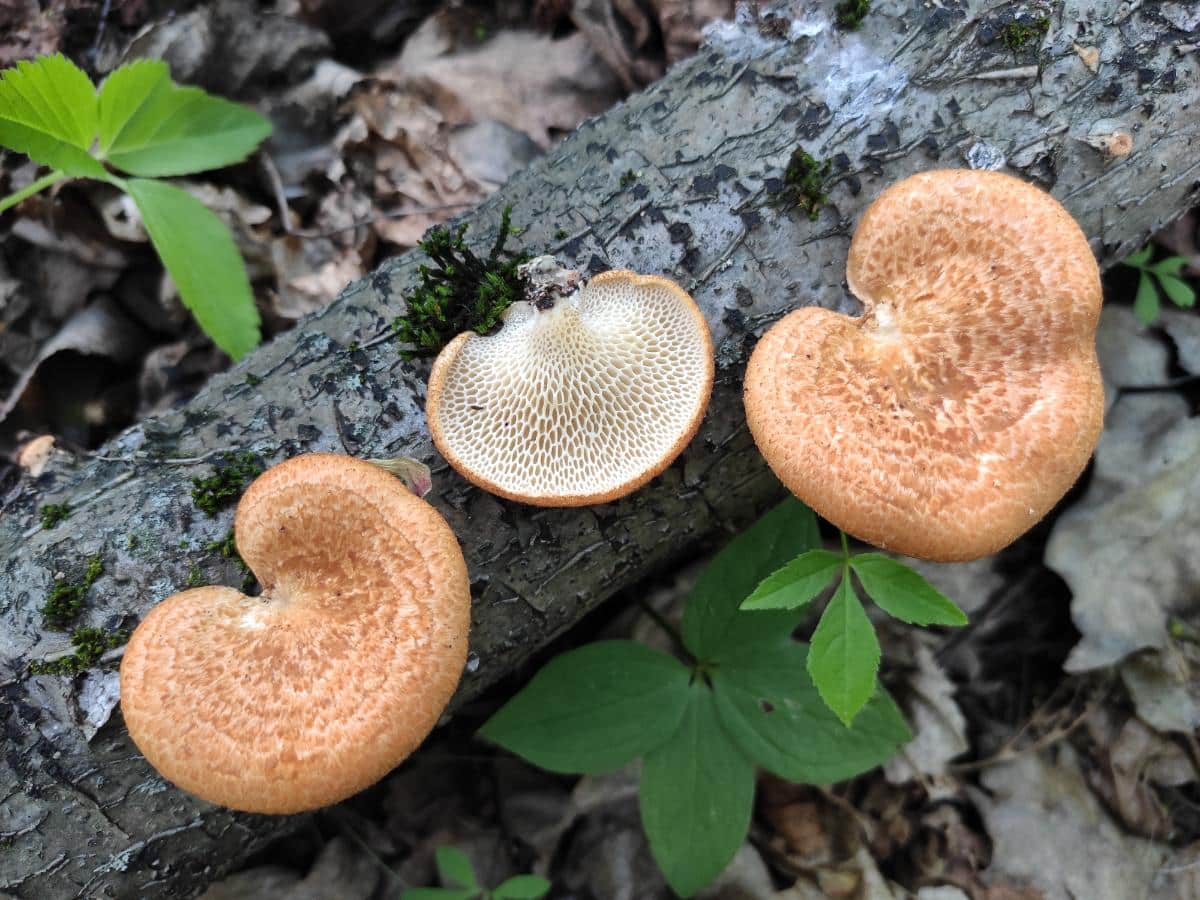
Jump to:
All About The Honeycomb Polypore
First described by Augustin Pyramus de Candolle in 1815 under the name Merulius alveolaris, this fungus has been a source of taxonomic confusion and debate for decades. Over the years, it has been placed in various genera, including Polyporus and Favolus, before finally finding its current home in the newly erected genus Neofavolus.
The decision to establish the genus Neofavolus was not without controversy, as some mycologists argued that the molecular and morphological evidence could be equally well-suited to retaining the species within the Polyporus genus. However, the name Neofavolus alveolaris has become the widely accepted designation for this species (for now).
The genus name Neofavolus comes from the Greek and means “many pores.” The specific epithet alveolaris translates to “with small pits or hollows.”
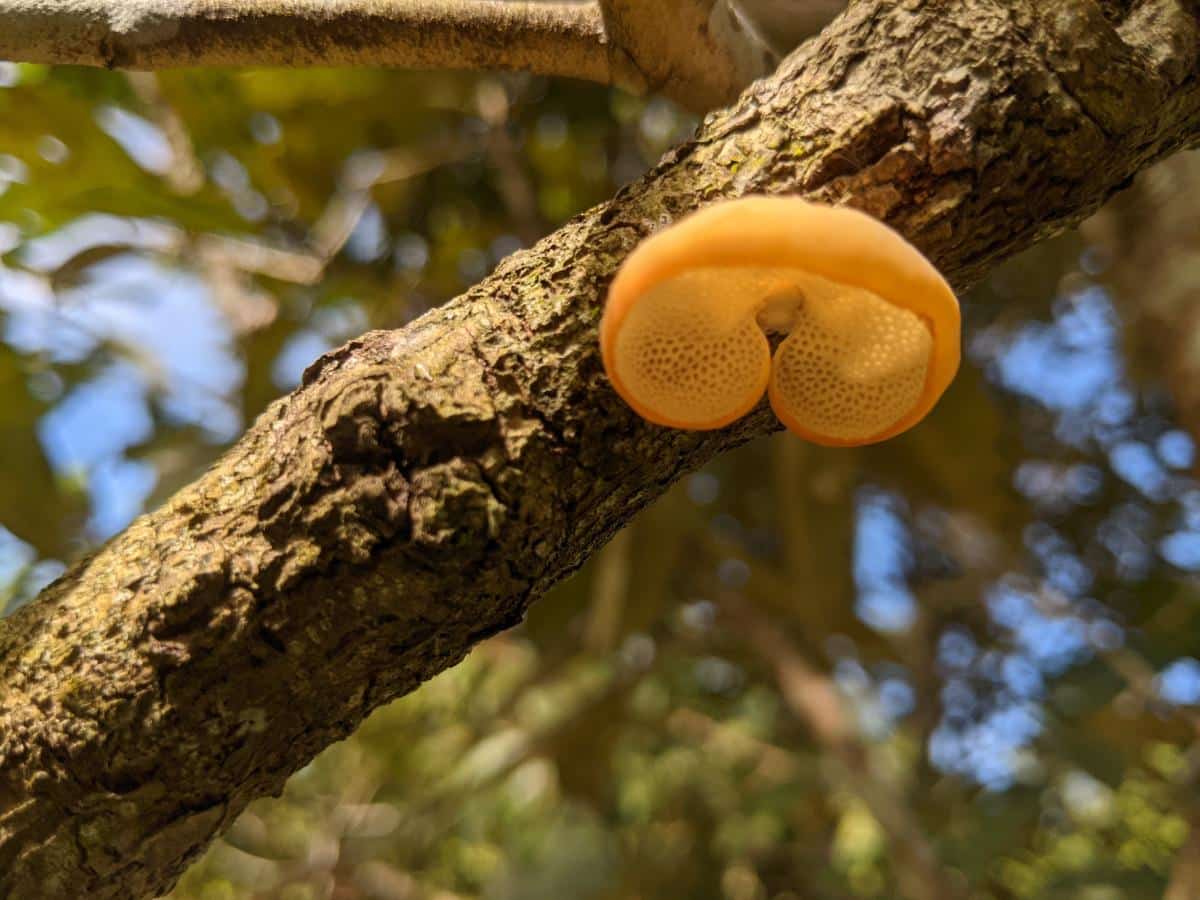
Adding to the complexity of this mushroom’s identity, recent studies have revealed that the name Neofavolus alveolaris may actually encompass a complex of distinct species rather than a single, widespread taxon. Genetic analyses have uncovered the existence of several genetically divergent lineages within what was once considered a single, broadly distributed species. And this type of species might not occur in North America at all—it might be a European species that doesn’t grow here. This article by Alden Dirks explains it all very well.
These findings have led to the recognition of a new species, Neofavolus americanus, which was recently described from specimens collected in the eastern United States. The taxonomic status of other North American populations, previously identified as Neofavolus alveolaris, remains in flux, with the potential for further species-level distinctions to emerge as more research is conducted.
For the purposes of this article, though, we will consider them all the same species since their physical descriptions are so similar. If you find one of these, you can know it’s a honeycomb polypore, which is enough for most of us. But, if you want to be exact, you’re going to have to do a bit more studying.
The fruiting bodies of Neofavolus alveolaris are typically fan-shaped, semicircular, or kidney-shaped cap and vibrant orange to orangish. The cap surface is dry with a slightly scaly texture. Nestled beneath the cap is the pore surface, which is whitish to pale orangish in color and features a network of large, diamond-shaped, or hexagonal pores that can be up to 1/16 inch wide and 1/32 inch long.
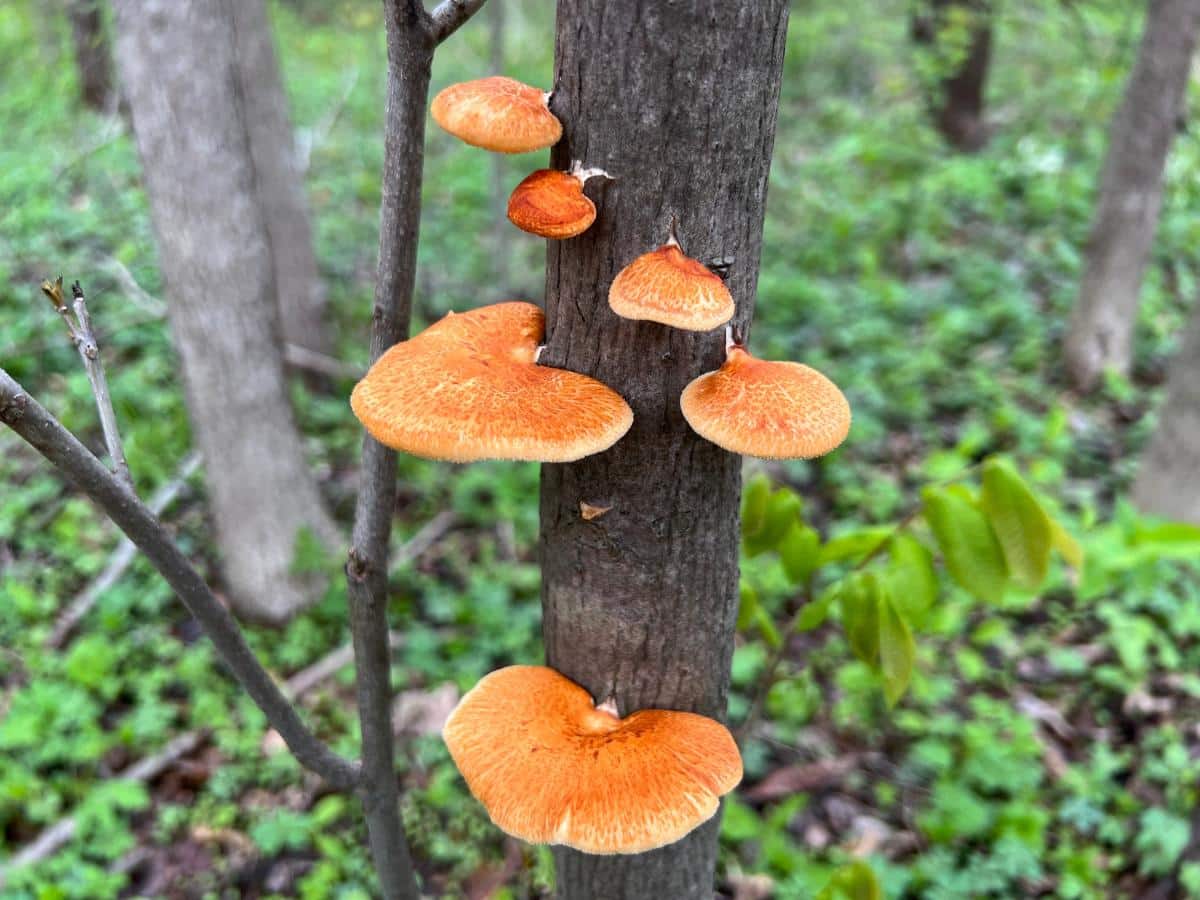
Honeycomb Polypore Identification Guide
Season
The honeycomb polypore typically first appears in late spring, often coinciding with the emergence of morels. One of the most remarkable traits of the honeycomb polypore is its ability to persist through the seasons. While it first appears in the spring, the honeycomb polypore can continue to thrive well into the summer, fall, and even winter months.
Habitat
This saprobic fungus grows on recently fallen branches and small logs of various hardwood tree species, including maple, oak, hickory, and more. It is particularly common in deciduous and mixed woodlands. Usually, it grows on dead wood but will also appear on living wood.
The honeycomb polypore is a widespread and adaptable species found across a diverse range of habitats in North America, Europe, Asia, and Australia. In North America, it is particularly common east of the Rocky Mountains.
It always grows on wood, never from the ground. They grow singularly or in scattered groupings.
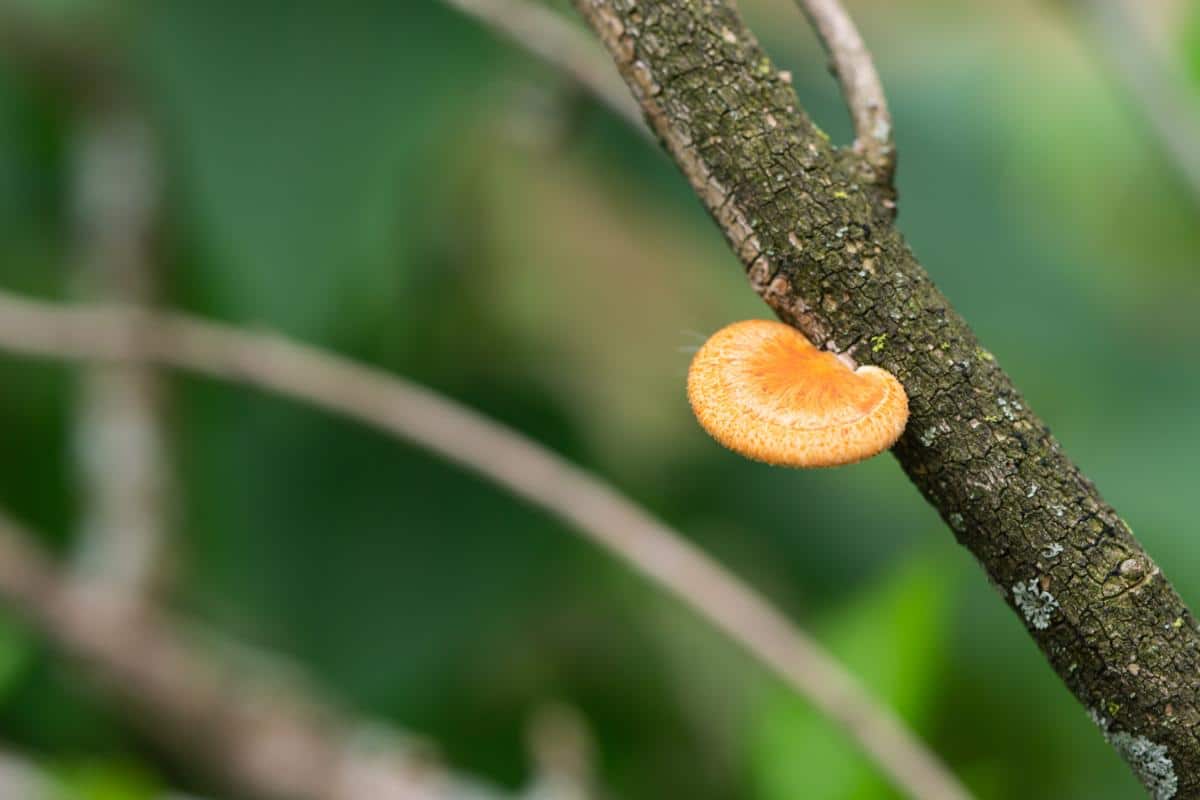
Identification
Cap
The honeycomb polypore cap is 2-7 inches across and fan-shaped, semicircular, or kidney-shaped. When young and fresh, it is a vibrant orange to orangish hue, but it fades to a more muted yellowish or nearly white color as the mushroom ages. The cap surface is dry and usually covered with tons of thin fibers, giving it a scaly appearance and velvety feel.
The fibers may fall off with age to create a bald, unadorned appearance. Usually, though, there is at least some fuzziness.
Pores
The pore surface of the honeycomb polypore is whitish to pale orangish in color and features a network of large, diamond-shaped, or hexagonal pores that can be up to 1/16 inch wide and 1/32 inch long. The pores are radially arranged (spread out from a central point) and continue down the stalk.
While the common names make it sound like the pores might be perfect hexagons, that is actually rarely the case. Usually, the pores are irregularly honeycombed, with some tight and well-formed, and others stretched out or elongated. This “stretched” pore looks occurs as the cap grows. Some look more like diamonds, others like hexagons, and others like stretched diamonds.
Stem
The honeycomb polypore typically has a short, stubby lateral stalk but may also have a more substantial, centrally positioned stem. Or, it might not have a stem at all. The stalk, when present, is 3/16 to 3/4 inch long.
Taste and Odor
The taste and odor of the honeycomb polypore are not distinctive or slightly bitter.
Flesh and Staining
The flesh of the honeycomb polypore is white, tough, and up to 2 mm thick. It does not stain or change color when sliced.
Spore Print
The spore print of the honeycomb polypore is white.
Key Identification Features:
- Orange to orangish cap when young
- Diamond-shaped to hexagonal pores
- Short, stubby lateral stalk or a more substantial, centrally positioned stem.
- Grows on dead hardwood branches and logs
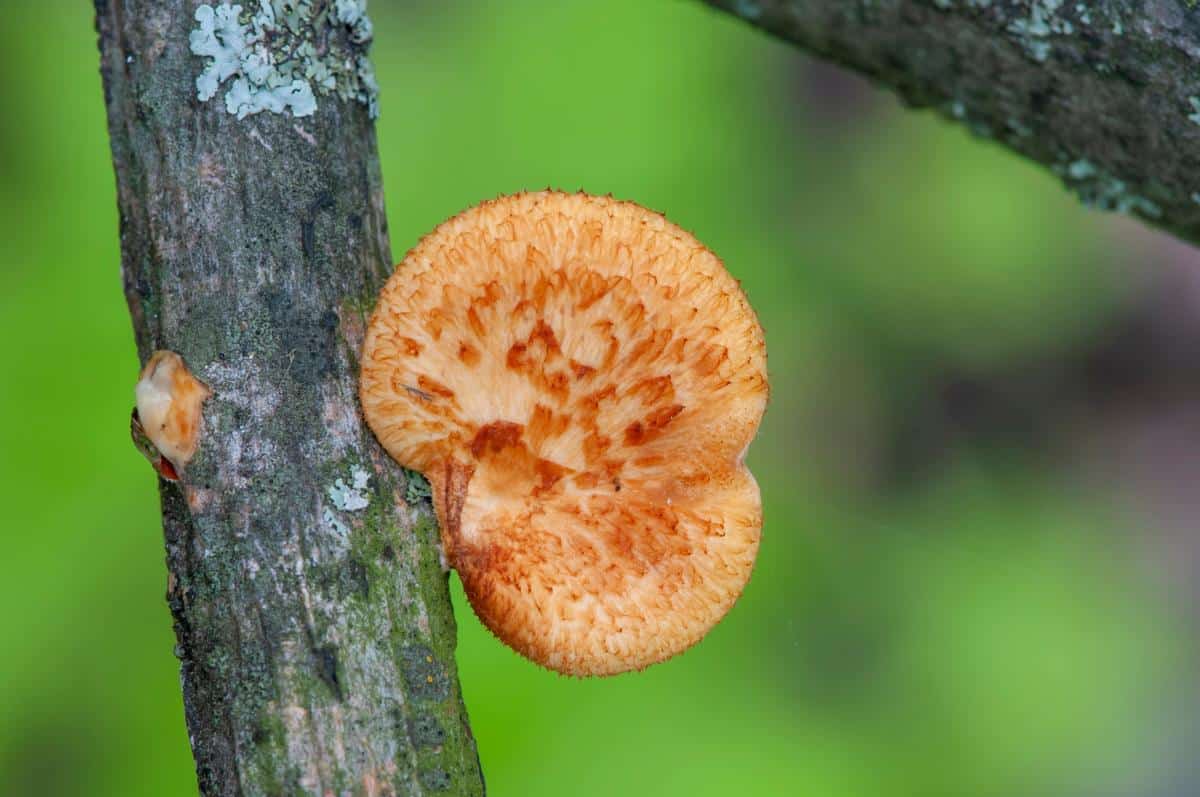
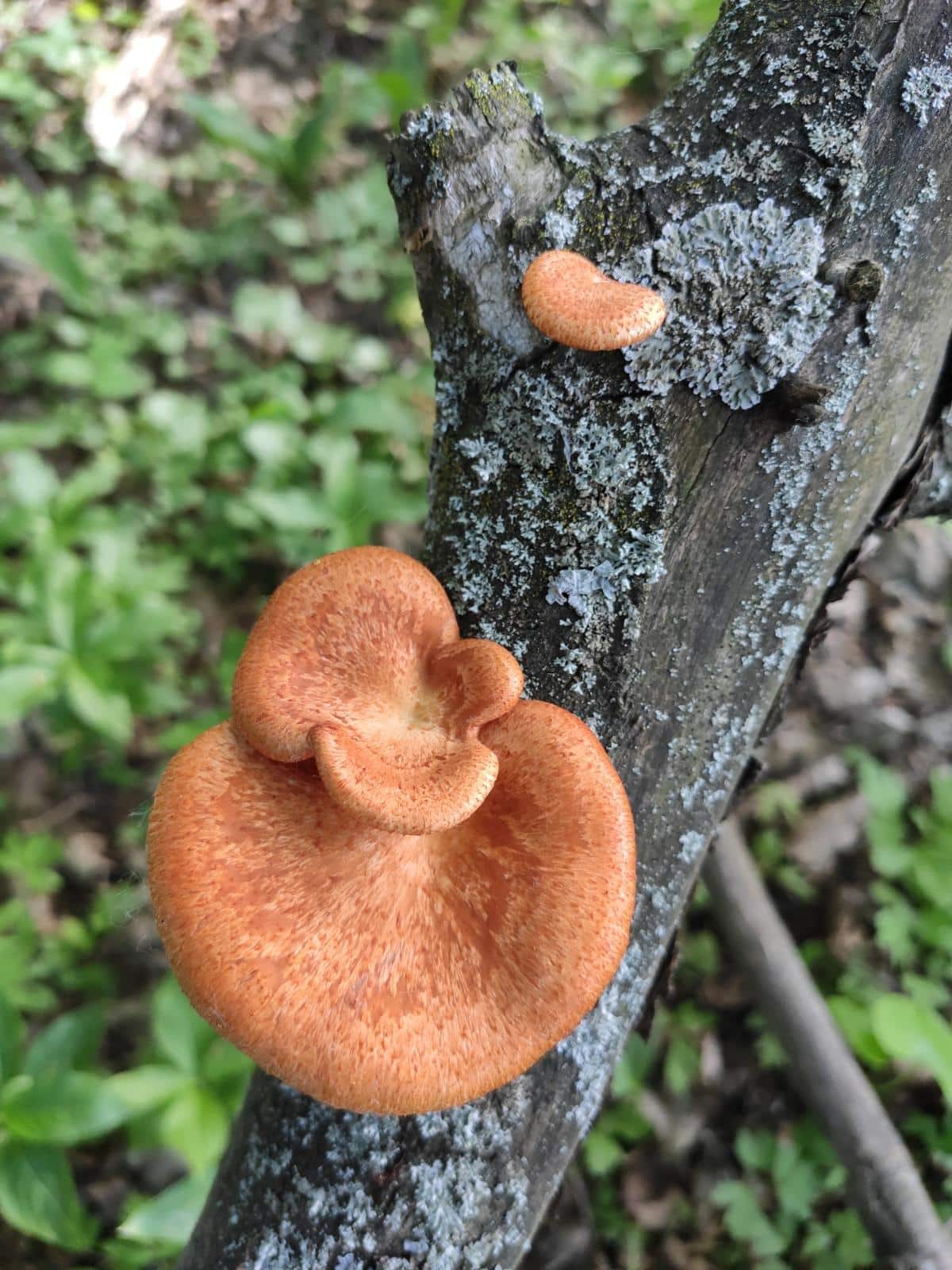
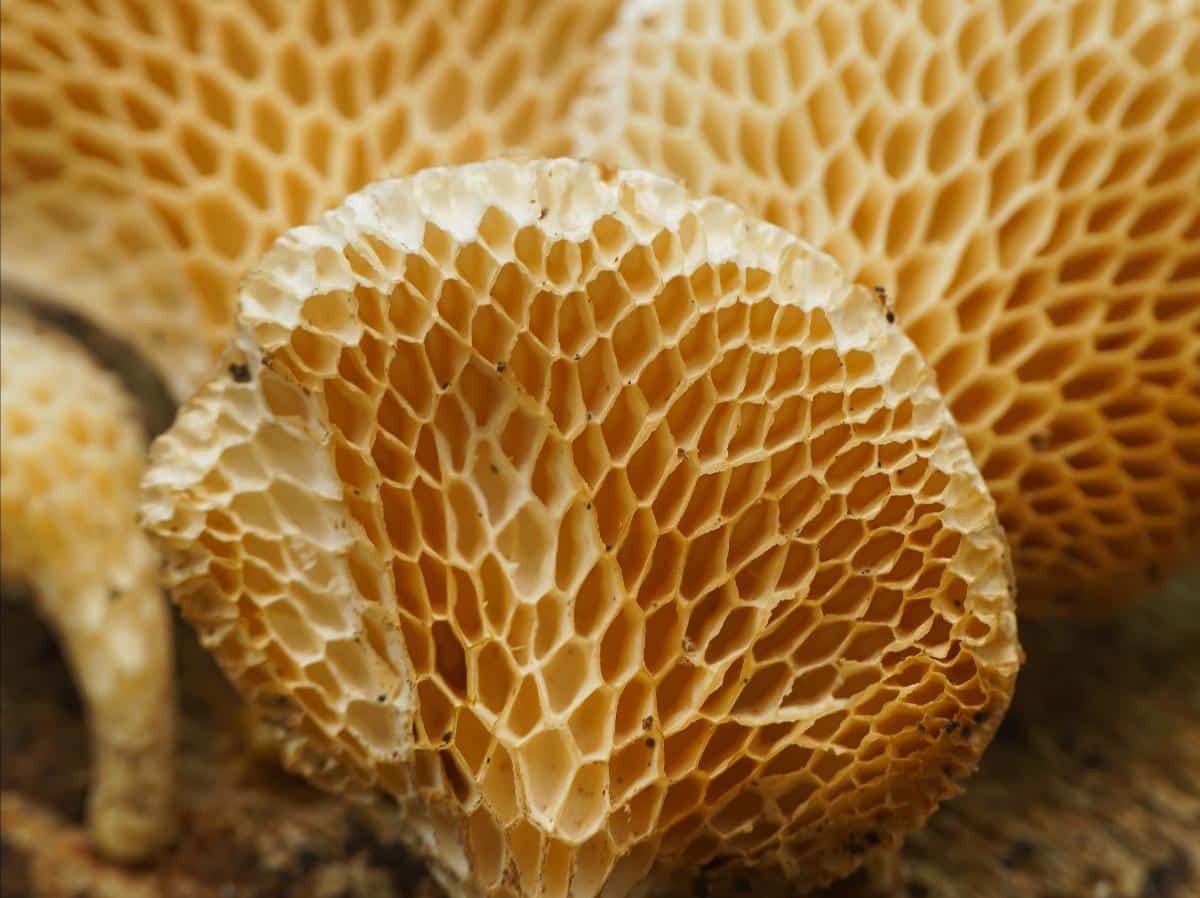
Honeycomb Polypore Lookalike Species
Despite its distinctive appearance, the honeycomb polypore can be easily confused with several other polypore species, particularly in its later stages of development when the vibrant orange hues have faded.
Dryad’s Saddle (Cerioporus squamosus)
Dryad’s Saddle is a larger bracket fungus with more darker, more pronounced scales and fibers on the cap surface compared to the honeycomb polypore. It is also known as pheasant back. Dryad’s saddle has an intricately patterned cap that looks like the back feathers of a game bird (pheasant!).

Spring Polypore (Lentinus arcularius aka Polyporus arcularius)
The Spring Polypore has a similar honeycomb pore surface that could be confusing. However, the cap of this species is darker brown in color, which fades to yellowish-brown as it ages. Unlike the honeycomb polypore, it has a more obvious centrally positioned stem. The stem is usually the fastest way to differentiate these since the honeycomb polypore usually doesn’t have a significant one.
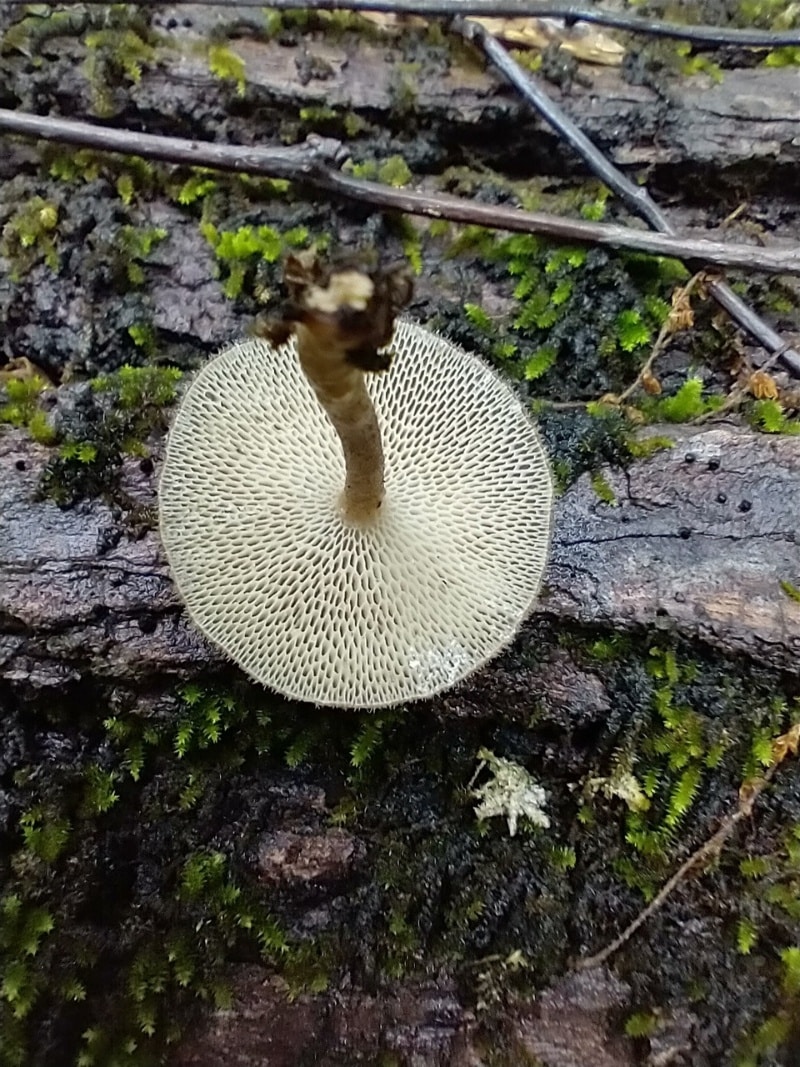
Bresadolia craterella (Polyporus craterellus)
This polypore species is more ochre to tan with small reddish-brown scales. It isn’t as brightly colored as the honeycomb polypore. It also has a more prominent stem.
Honeycomb Polypore Edibility
While the honeycomb polypore is not considered a prime edible mushroom, it is edible, i.e., not poisonous. It has a tough and uneven texture that likely will appeal to only some palates. Some sources have described the flavor as slightly bitter, while others have found it to be relatively nondescript.
Opinions on its palatability vary, with some finding it enjoyable and others deeming it too tough or lacking in flavor. It is best if gathered when young because it isn’t as tough and leathery then.
Ecological Uses of the Honeycomb Polypore
Researchers have isolated a polypeptide compound from fresh fruit bodies, dubbed “alveolarin.” This compound has been shown to possess antifungal properties, inhibiting the growth of several plant pathogens. This discovery underscores the need to explore the honeycomb polypore’s ecological potential further.
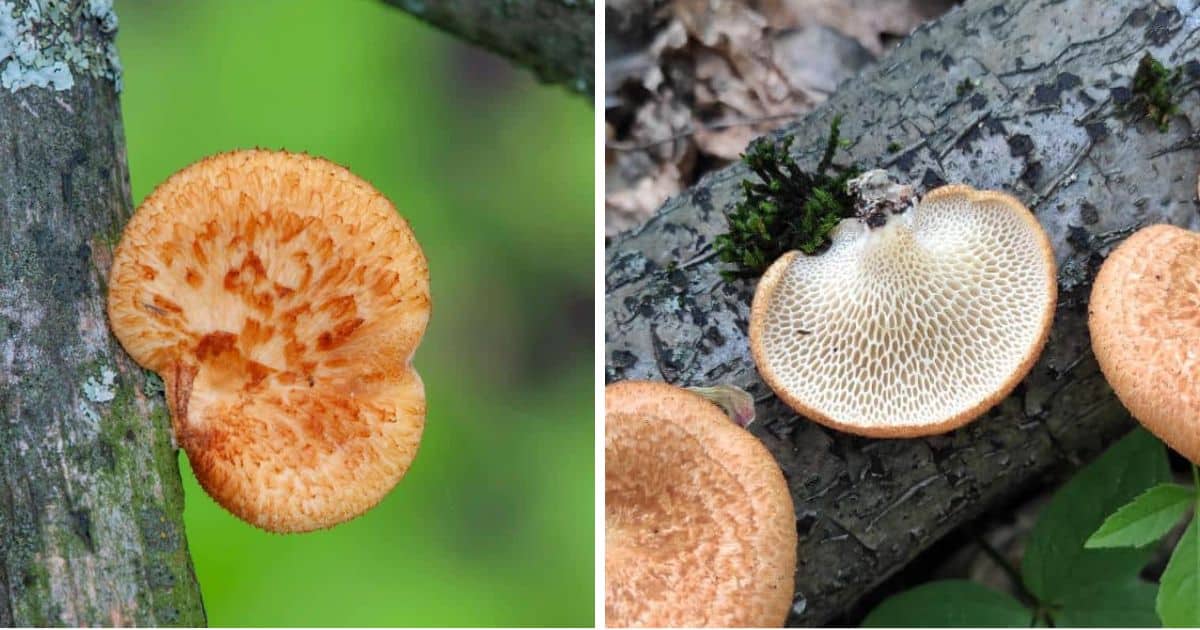
Common Questions About The Honeycomb Polypore
Is hexagonal honeycomb polypore edible?
Yes, Neofavolus alveolaris is edible — it is not toxic. However, it is usually very tough and leathery and not worth the effort to try eating.





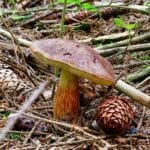
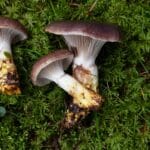
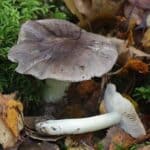

Leave a Reply